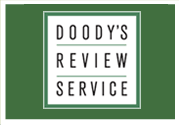|
|
|
eBook/Digital Version available from:
|
 Score: 92
Score: 92 |
 |
| Wastewater-based Disease Surveillance for Public Health Action |
 |
ISBN: 978-0-309-69551-0,
152 pages,
Soft Cover
ISBN-10: 0-309-69551-1 |
 |
| Copyright: |
2023 |
 |
| Edition: |
1st |
 |
| Author: |
National Academies of Sciences, Engineering, and Medicine |
 |
|
Specialties:
|
Infectious Disease
, Occupational and Environmental Medicine
, Public Health |
 |
| Publisher: |
National Academies Press |
|
500 5th Street, NW |
|
Keck 360 |
|
Washington, DC 20001 |
|
UNITED STATES |
|
P: 8006246242
F: 202-334-2793 |
|
http://www.nap.edu |
 |
| List Price: |
$24.00 |
 |
| Google: |
|
|
 |
|
|
|
|
At A Glance
|
The COVID-19 pandemic spurred a rapid expansion of wastewater-based infectious disease surveillance systems to monitor and anticipate disease trends in communities.The Centers for Disease Control and Prevention (CDC) launched the National Wastewater Surveillance System in September 2020 to help coordinate and build upon those efforts. Produced at the request of CDC, this report reviews the usefulness of community-level wastewater surveillance during the pandemic and assesses its potential value for control and prevention of infectious diseases beyond COVID-19. Wastewater-based Disease Surveillance for Public Health Action concludes that wastewater surveillance is and will continue to be a valuable component of infectious disease management. This report presents a vision for a national wastewater surveillance system that would track multiple pathogens simultaneously and pivot quickly to detect emerging pathogens, and it offers recommendations to ensure that the system is flexible, equitable, and economically sustainable for informing public health actions. The report also recommends approaches to address ethical and privacy concerns and develop a more representative wastewater surveillance system. Predictable and sustained federal funding as well as ongoing coordination and collaboration among many partners will be critical to the effectiveness of efforts moving forward. Learn more and order here.
|
|
Reviewer:
|
John Pierce,
MBBS(MD) PhD
(Navy Environmental Health Center)
|
 |
|
Range
|
Question
|
Score
|
| 1-10 |
Are the author's objectives met? |
8 |
| 1-10 |
Rate the worthiness of those objectives. |
10 |
| 1-5 |
Is this written at an appropriate level? |
5 |
| 1-5 |
Is there significant duplication? (1=significant, 5=insignificant) |
5 |
| 1-5 |
Are there significant omissions? (1=significant, 5=insignificant) |
5 |
| 1-5 |
Rate the authority of the authors. |
5 |
| 1-5 |
Are there sufficient illustrations? |
5 |
| 1-5 |
Rate the pedagogic value of the illustrations. |
5 |
| 1-5 |
Rate the print quality of the illustrations. |
5 |
| 1-5 |
Are there sufficient references? |
1 |
| 1-5 |
Rate the currency of the references. |
4 |
| 1-5 |
Rate the pertinence of the references. |
5 |
| 1-5 |
Rate the helpfulness of the index. |
5 |
| 1-5 |
If important in this specialty, rate the physical appearance of the book |
N/A |
| 1-10 |
Is this a worthwhile contribution to the field? |
10 |
| 1-10 |
If this is a 2nd or later edition, is this new edition needed? |
N/A |
|
 |
|
Reviewer:
|
John Pierce,
MBBS(MD) PhD
(Navy Environmental Health Center)
|
 |
|
Description
|
| This book describes progress and challenges of establishing a wastewater-based infectious disease surveillance system in the United States. Coming on the heels of the COVID-19 pandemic and associated monitoring efforts, the book announces a new era in public health efforts. |
 |
|
Purpose
|
| The NAS author team seeks to educate and inform regarding community implementation, surge capacity, and other technology elements of wastewater-based infection disease surveillance. The partnering framework for wastewater surveillance is shown, highlighting coordinating agencies such as the U.S. Department of Health and Human Services, the Center for Disease Control and Prevention, and others. |
 |
|
Audience
|
| Expected readers will arise from a variety of public health advocacy groups and professionals as well as others charged with protection of the public. Interestingly, this relatively short book may be extensively referenced by researchers seeking funding. |
 |
|
Features
|
| The structure of this book falls into four major sections: introduction, wastewater surveillance for COVID-19, a vision for surveillance, and applicable strategies. It is rich in terms of case-study applicable inset boxes, figures, and graphs. The history of the United States' sentinel sites and their planned expansive is noteworthy. |
 |
|
Assessment
|
| This relatively short one hundred-plus page report will provide critical data for decision-makers to properly utilize wastewater-based screening of infectious organisms. Some of its most useful descriptions involve those describing sentinel sites and also other means of sharing findings with both the public and media outlets. |
 |
|
|
|
|
|
|
|
